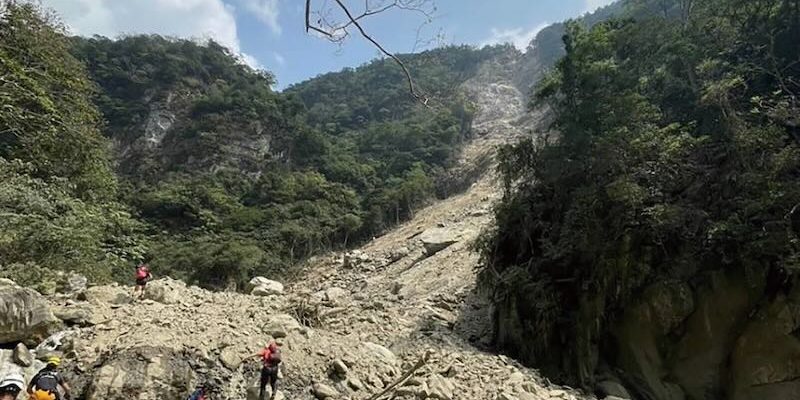
By Austin Babb and Jason Wu
Train Derailment in Hualien Kills 49
On April 2, passenger train Taroko Express No. 408 collided with a crane truck near the Qingshui Tunnel in Hua-lien County. The resulting derailment caused the death of 49 passengers, with more than 200 injured. Among those losing their lives were two American women who were in Taiwan teaching English through the Fulbright Program.
The crane truck that caused the accident had been on the site of a Ministry of Transportation and Communications (MOTC) construction project, located on a steep hillside above the tunnel. The truck’s operator, a subcontractor named Lee Yi-hsiang and a migrant worker he employed were using an excavator to remove the truck from some bushes when it slid down the hill and onto the tracks approximately one minute before the train approached the tunnel. By then, it was too late to stop the train or slow it in time. Lee has been charged by the Hualien District Prosecutor and could face up to 12 years in prison.
Following the incident, MOTC Minister Lin Chia-lung submitted his resignation, and although both Premier Su Tseng-chang and President Tsai Ing-wen initially refused to let him step down, Su finally approved the decision on April 15. Deputy MOTC Minister Wang Kwo-tsai was named to succeed Lin. Wang has stated his support for the “enterprization” of the Taiwan Railways Administration (TRA) – running the agency more like a corporation without actually privatizing it – as a way to improve safety and efficiency.
The area damaged by the crash reopened on April 19. Among the several passengers on the first train to resume service on the line were former Minister Lin and TRA Acting Director-General Chi Wen-chung.
Local COVID Outbreak in Northern Taiwan
Taiwan’s first local COVID-19 case in several months was reported on April 2 – the son of one of two China Airlines (CAL) cargo pilots who had tested positive for the virus. By April 27, the number of infected pilots had increased to nine, and the wife of one became the second domestic infection from the outbreak. The following day, the Linkou branch of Kang Chiao International School reported that one of its students, a family member of one of the pilots, had tested positive, forcing the school to conduct all classes virtually until May 5. A total of 193 people that the student had come into contact with were tested for the virus as well.
To help manage the new outbreak, the Central Epidemic Command Center (CECC) has begun conducting polymerase chain reaction (PCR) and antibody tests of CAL’s 1,279 pilots. It has also dispatched special police and healthcare experts to the airline’s quarantine facility to determine whether its disease prevention measures were adequate. However, the CECC has yet to determine the infection source or any link among the pilots.
CECC Commander Chen Shih-chung told the press on April 23 that EVA Airways Corp., Taiwan’s other major carrier, has been significantly swifter in vaccinating its employees than CAL. As of April 22, 456 EVA employees had already been vaccinated, more than twice the number at CAL. Chen said a trial program is being rolled out to reduce the length of quarantines for vaccinated foreign travelers, but details of the new program have yet to be released.




